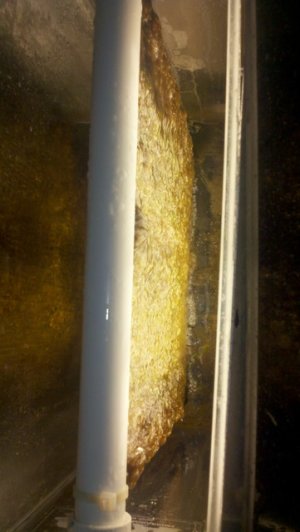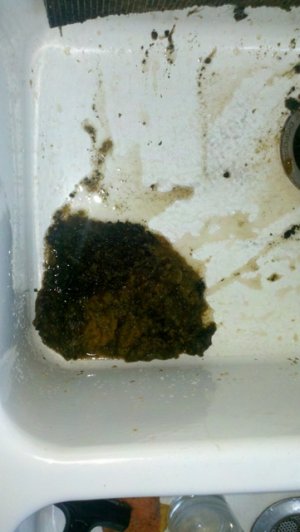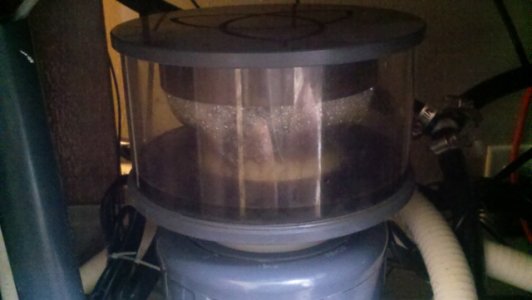I would not do this. One of the concepts is that when you cut a slot straight and of the correct width, and insert the screen into it, if algae tries to grow into the slot, then pressure will build up or the flow will be shifted to another part of the slot. Over time, this will balance out and eventually the pressure will increase at the slot and this will force the algae to stop growing (too much pressure). For this to work right, you need a water column available to perform the pressure. Providing a 'relief' flow option will only allow the algae to grow into and completely block the slot and all the flow will go out the bypass / emergency flow.
I did exactly this on my first build and within a few days, I got flow through the bypass, and I had it terminated underwater so it created a siphon and cut the flow to the screen down to about 20% at best. I ended up capping it and letting the water level build up in the overflow to create pressure.
So slot clogging due to algae growth is really not the concern, as this would happen very slowly and not all at once. What is of concern is the pipe clogging, but this is an issue that can happen with any overflow pipe, like a snail getting in the pipe and stopping flow at some point. This is why most people put a screen over the intake in the overflow box, or have teeth on their overflow, or use a Herbie or BeanAnimal.
I will make a comment that while some choose to insert their screen into the slot tube rather far into the pipe, I choose and recommend that you only insert it about 2x the thickness of the pipe wall. This allows anything large to get shoved to the end of the slot tube rather than being caught at the start of it.
One design I have seen has the screen inserted into the pipe far enough that it touches the top inside of the slot pipe, then it was held by just one zip tie in the middle. This is fine as long as your pipe is well protected at the intake (tank side) but I still wouldn't do it. I don't see any benefit.







